Thailand, neutral to Asian belligerent: The WW2 Thai Navy
Introduction
Smaller than it is today under the Thai flag, the Siamese fleet was a serious adversary for the rare Chinese admirals who tried to blockade its ports. Some naval battles in the Middle Ages attest to Siam’s resistance and obstinacy, with a certain tactical skill, proverbial because never caught in default. Testified today by Angkor Wat, the brillant culture once dominated most of South-east Asia, what is nowadays Laos, Cambodia, Thailand and Vietnam. But victories were not decided at sea, rather on the providential river network around the Mekong, Chao Praya and others.
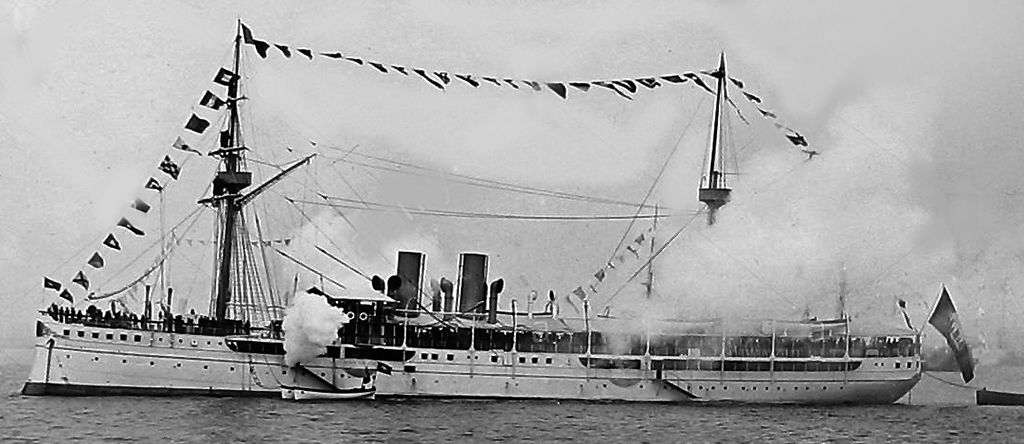
HTMS Maha Chakri at Queen Victoria’s golden jubilee 1897.
This fiercely independent country, heir to the Khmer Empire, found itself in the 19th century struggling with the installation of a powerful colonial neighbour: France, which ruled its colonies of Indochina, and made regular incursions on its border in what was called “Cochinchina”. In 1860, the Siamese government captured and armed an ex French steamer, the Formosa. It became the first modern warship in the country.
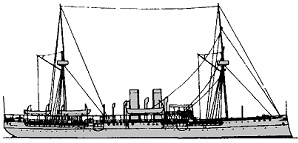
Original 1890s Maha Chakri, flagship of the Thai Navy in 1914.
In 1880, the Thai Navy (still “Siamese” at that time) had a mixed cruiser and gunboats, and in 1914, a cruiser, two floating batteries, 5 gunboats, 2 destroyers, and 4 torpedo boats. It was a bit “short” in front of the French navy, but it had in fact few major units in the sector. There was, however, no actual hostility between the two countries, and better still, Siam declared war on Germany and Austria-Hungary in June 1917. Siam did not take part in any combat against forces that were never met. On the other hand, a number of German steamers were seized by the Siamese and integrated into the merchant fleet, which from seven vessels would go to twelve.
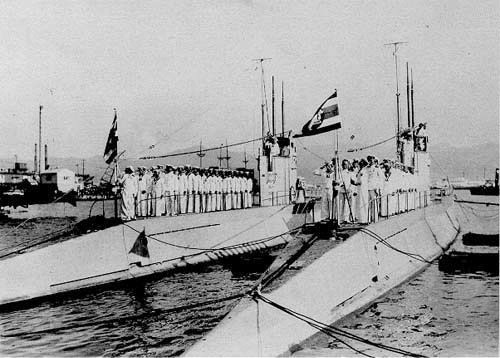
HTMS Matchanu and HTMS Wirun, the most modern Thai submarines
Interwar history of the Thai Navy
Some ships were obtained from England in the 1920s, including a destroyer, but these forces were aging and very modest in 1930, despite a large number of assorted steamers including transport, and a military infrastructure composed of a naval academy at I’hra Rajwangderm, 6 local delegations, two arsenals and two radio centers, in Bangkok and Singora.
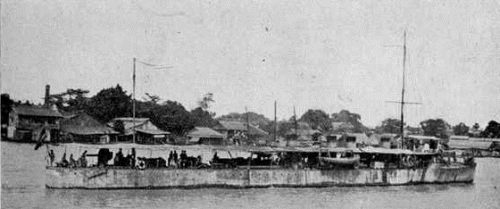
Sua Khamronsin in 1919. Both these Kawasaki-built 1909 destroyers Sua Khamronsin and Sua Tayanchon, were discarded before the war, in 1937 and 1939.
On the other hand, an armored river gunboat was ordered in 1924 from Great Britain, but the real renewal of the fleet began in 1934, with an ambitious naval plan comprising two coastal battleships, 8 torpedo boats, 2 high sea gunboats, 4 submersibles, 4 MTBs ordered from Japan, Great Britain or Italy. The plan continued for 1937 with 2 minelayers, 3 torpedo boats, 3 fishery protection vessels, and above all two light cruisers ordered from Italian shipyards of the Adriatic in 1938, but never delivered as they were requisitioned for completion for the Regia Marina. They would form the core of the WW2 Thai Navy.
This coincided politically with a change of regime, and move to a rapprochement with the axis. Indeed after the Siamese revolution of 1932, the government was headed by Major General Plaek Phibunsongkhram, first as defence minister, and composed of civilian liberals and conservatives, led by Pridi Banomyong (foreign minister). It was stable and worked harmoniously for years. However with the arrival of Phibun as prime minister in December 1938, the regime became openly militastic, and developed some fascist characteristics.
Historical context
It is important to understand the position of Siam in the region to have som clues about the scope of the naval program.
Siam during WW2
In early 1939 forty political opponents were arrested, trialled and eighteen executed. Prince Damrong and Phraya Songsuradej were exiled and a demagogic campaign against the Chinese diaspora in Siam started. Schools and newspapers were closed, Chinese-owned businesses heavily taxed. Plaek Phibunsongkhram cumulated the role of Chief of the Thai Army and Prime Minister until 1944, while King Ananda Mahidol, which had only representation powers stayed in neutral Switzerland.
Phibun and Luang Wichitwathakan which was the regime’s ideological guide and speaker, copied fascist propaganda techniques and built a cult of the leader, using radio broadcasting to shape popular support cross-medias while a serie of authoritarian laws were passed, limiting the press, popular gatherings, judiciary procedures and and many other aspects of every day life. Wartile newspapers only print only good news about Axis successes and sarcastic comments about internal news.
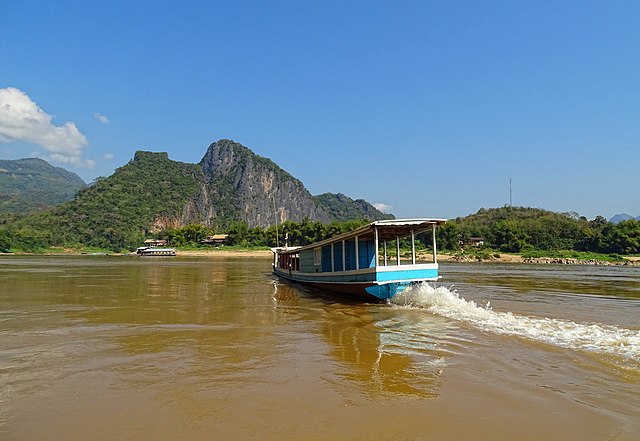
The Mekong, lifeline of the whole southasia peninsula.
On 23 June 1939, Siam’s strongman changed the country name to “Thai” (Thai: ไทย), later Thailand, meaning “land of the free”. That was also to gain popular support against ethnic diversity, with Malay, Chinese, Lao, Shan communities. Well fit for the “new world’s order” proned by the axis, the idea of a “Thai race” emerged, underlining a Pan-Thai nationalism forcng integration of Shan, the Lao and Tai minorities, even enlarged to Vietnamese, Burmese and South Chinese into a dreamed “Great Kingdom of Thailand” (มหาอาณาจักรไทย).
From 1939 to 1942, twelve Cultural Mandates were insituted, one requiring all Thais to salute the flag every morning, singing the national anthem and speak the national language. Working hard, being well informed over international issues and dressing in a Western fashion were also promoted. Traditional Thai music, dance, theatre and culture were abolished, changed to Western style as well. Phibun called himself Than phu nam (ท่านผู้นำ) or (“the leader”). To cement national support and uniformity of thought, having a common enemy was soon an obvious path.
Thai military operations against Laos, Cambodia and Indochina
At the start of World War II, Plaek Phibunsongkhram fascist stance, also cultivating and intensifying militarism and nationalism started to revive irredentist claims. This went naturally by stirring up anti-French sentiment, and supporting restoration of former Thai territories in Cambodia and Laos, lost to Indochina. Phibun started cultivating closer relations with Japan, looking for help in a future clash French Indochina. The Thai population seemed united to demand for the return of the lost provinces, but Phibun’s Japanese bias iched many in the government, notably Pridi Banomyong and many old conservatives.
Japan started to forcefuly negociate with Vichy France to obtain concessions for Thailand and March 1941, France accepted to cede 54,000 square kilometres of Laotian territory (west of the Mekong) and most of the Cambodian province of Battambang. The latter was renamed the Phra Tabong Province. This was a considerable success for Phibun which prestige new heights.
Japan however wanted to maintain good relationships with Vichy and a status quo, but they suceeded in expanding their influence in Thailand and Indochina, using notably the later, occupied, as a military base for the invasion of Burma and Malaya (in early 1942).
Thailand was ultimately forced to accept a quarter of territory claimed and pay six million piastres as a concession to the French due to Japanes mediation, and relations with Japan degraded as Phibun started to switch support and started courting the allied, fearing an imminent Japanese invasion. In June 1940, the French defeat and full Japanese occupation (and US sanctions) dramatically changed the picture. Thailand’s forces were made ready to takeover (with Japanese blessings) the remainder of claimed territories in Indochina, notably in Cochinchina.
The Indochina Campaign
In October 1940, the Franco–Thai War broke out, started with sporadic battles between Thai and French forces along Thailand’s eastern frontier. Later there was a fully-fledge invasion of Laos and Cambodia in January 1941. The Royal Thai Armed Forces eventually repelled the French and occupied disputed territories in French Indochina, whereas the French crippled the Thhai Navy at the Battle of Ko Chang.
The invasion of Indochina, after a short advance however were stopped by well-equipped and resolute colonial troops, and notably the foreign legion. There followed a famous action in the Gulf of Siam, the battle of Koh Chang, on January 16-17, 1941. Despite well thought tactics and on paper, superior artillery, the Siamese fleet lost its armoured coast guard Sri Ayuthia and Dhonburi and its fleet was crippled (see later).
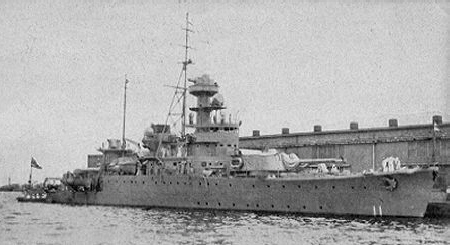
HTMS Sri Ayudhya
The battle of Koh-Chang was a stark reminder Thailand grew perhaps too confident after seeing the successes of the Axis and Japan all-out war against old European colonial possessions. Eventually the Thai government signed an armistice on January 29, 1941 with France. A status quo maintained the borders until the Japanese invasion on December 7, 1941.
The war cost was about 350 casualties on both sides, Thailand lost several tanks, and around 30% of the French aircraft were pit of service after air raids and lack of maintenance while the Armée de l’Air admitted one Farman F221, two Morane M.S.406s lost, while Royal Thai Air Force claimed to have shot down five French aircraft and 17 on the ground, conceding three in air combat and 5-10 by French air raids on Thai arfields.
The battle of Koh Chang (January 1941)
While the Franco-Thai War ground operations went badly for French land forces at first, ill-equipped against a much larger Thai Army, Admiral Jean Decoux (French Governor General and C-in-C of naval forces of Indochina) decided to attempt a naval attack on the Thailand’s fleet and then attack and coastal cities to diver forces and attention. Bombardming facilities and railways, oil tanks were also a way to support the land war and prepare a large counter-offensive along the Cambodian frontier after gathering all available forces.
Order of battle: The Thai Navy:
The Royal Thai Navy, had been thorougly modernized with ships from Japan and Italy. The main assets were Japanese-built armoured coast defence vessels of the Donbhuri class. Displacing 2,500 tons and armed with heavy cruiser guns (8-inch or 203 mm), they were more than a match for the single French cruiser present, Lamotte-Picquet, armed with eight 6-in guns. This was completed by two older British-built armoured gunboats, still armed with 6-inch (152 mm) guns and 12 modern torpedo boats and four submarines, against nothing equivalent on the French side.
The Navy was covered by Royal Thai Air Force’s 140 aircraft, comprising Mitsubishi Ki-30 “Ann” light bombers. They were quite capable of attacking French ships, and were covered by fighters such as P-36 Hawk and 70 Chance-Vought O2U-2 Corsair biplanes plus six Martin B-10 bombers.
The French Navy in Indochina:

Admiral Jean Decoux’s naval forces were called the Groupe Occasionnel of “ad-hoc group”, created on 9 December 1940 at Cam Ranh Bay (North of Saigon) headed by Captain Régis Bérenger which had its mark on the French light cruiser Lamotte-Picquet, dating back of 1923, poorly armored but fast and armed with eight 6-in guns.
This force was completed by modern colonial sloops: Dumont d’Urville and Amiral Charner. They could embark an infantry company, not armoured but armed as a destroyer (less one gun and TT tubes).
In addition, there were two more WW1-vintage avisos, Tahure and Marne.
There was no dedicated air cover but nine Loire 130 seaplanes, based at Ream for reconnaissance. Coastal survey launches could bring some intelligence, as well as local fishermen.
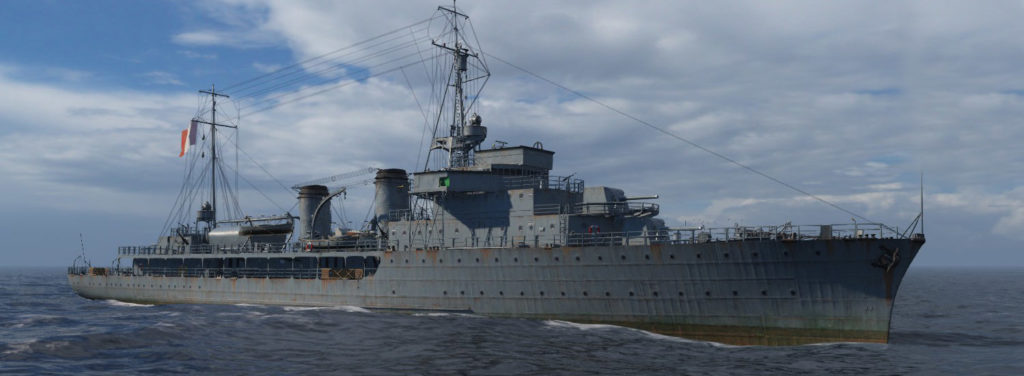
French rendition of the French colonial Avisos.
French Battle plans
Bérenger’s squadron trained in Cam Ranh Bay and assembled to depart on 13 January 1941. Admiral Decoux instructed Bérenger to seek and engage the Thai Navy. This was to support a planned land counter-offensive set for the 16 of January. Because of its disparate speeds Bérenger sent the slower sloops ahead, remaining in Saigon to complete his battle plans.
Several options were prepared, and the Vichy French Admiralty gave its approval. The final meeting on 13 January planned operation to start 24 hours later. Bérenger the departed on Lamotte-Picquet, refuelling at Cape St. Jacques; At 16:00 on 15 January the force assembled 20 mi (17 nmi; 32 km) off Poulo Condore.
Admiral Decoux’s plan was to Attack Siamese coastal cities from Rayong to the Cambodian frontier, in order to provoke and lure out Siamese nval forces and seek for an open see engagement, and at the same time, pressed the Thai Army to divert troops from the Cambodian frontier.
Ko Chang or Sattahip ?
On the evening of 15 January after a last conference on board the admiral ships Lamotte-Picquet, the squadron dropped anchor at 21:15, closing to the Thai coast at 14 kn (16 mph; 26 km/h), the top speed of the sloops. The French ships entered undetected in the Gulf of Siam, but their search for the enemy was not as fortunate. Loire 130s from Ream patrolled the coast from Trat to Sattahip and sighted so far just one coastal defence ship, plus a Trad-class torpedo boat at Ko Chang. In Sattahip, they spotted a gunboat, four torpedo boats, and two submarines, and this report was sent to the French Navy HQ at Saigon.
It was re-transmitted to Lamotte-Picquet’s force. Bérenger decided to atack Koh Chang at dawn attack first, which was the closest. Indeed Sattahip was out of reach of his sloops, and by then element of surprise would be gone. The strength of Sattahip fortififications was unknown also. The Ko Chang forces seemed weaker enough the squadron could take on coastal artillery at the same time.
Bérenger’s squadron approached Ko Chang from the southwest and had to find its way in relative dark between islands and islets, which for some were 200 metres (660 ft) high. His separated his forced, using this environment to hide his ships’s venue and then concentrate fire on parts of the Thai squadron, and covering escape roads, notably the easternmost channel. Lamotte-Picquet sailed to the eastern side of the anchorage to block the route while sloops blocked the center and targeted the Thai squadron while smaller ships concentrated westwards.
The battle
The French squadron closed at 05:30, split at 05:45 as planned, Lamotte-Picquet east, Dumont d’Urville and Amiral Charner center, Tahure and Marne west, as the before the sun show its first rays on the horizon, there were very calm seas, perfect conditions for gunners. Sunrise effectively came at 06:30, and the scene was lit only by the first rays of light on the horizon and by the dim moonlight.
The Lamotte Picquet had planes, but can’t launch one of her two as she had catapult problems. Instead for the final aerial reconnaissance of the target area one of the Ream-based Loire 130s arrived at 06:05, reporting two torpedo boats, possibly a greater threat than expected. Indeed HTMS Chonburi came to relieve HTMS Chantaburi during the night, scheduled to be back to Sattahip for repairs.
The Loire 130 carried bombs, and attempted to strafe both TBs, but alert was given and a heavy barrage of anti-aircraft fire broke out. The element of surprise because of this initiative, had been wasted. Still 30 minutes remained until sunrise, and opening fire. The Thai had by that time all their crews asleep, woke up, while stokers desperately tried to raise steam and prepare to slip their anchors.
Lamotte-Picquet’s captain then ordered fire and volleys of 6-in shells quickly made shortwork of both TBs, deadly for the gunboats. The cruiser then turned her guns on the shore observation post which relayed informations to the air force base at Chantaboun.
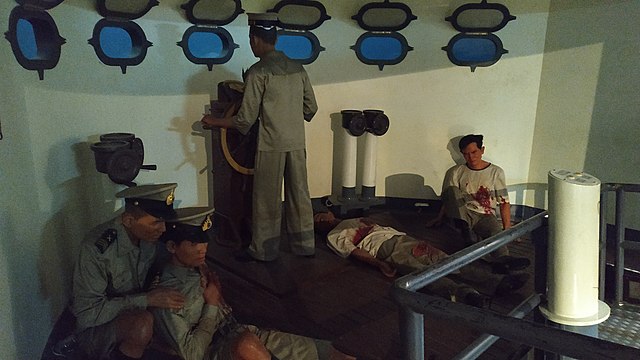
A diorama at the National Memorial museum showing the HTMS Thonburi’s bridge and captain Luang Phrom Viraphan, at Lam Luk Ka District, Pathum Thani Province.
At 06:38, Lamotte-Picquet’s lookouts spotted the approaching coastal defence ship HTMS Thonburi, sailing northwest, and distant of 10,000 metres or 11,000 yd. This was perilously close for her 8-in guns, and before she had a chance to fire, the Frech cruiser open fire first. The ensuring battle was an interesting duelling match between islets which frenquently interrupted it. To figure out the view, image the picturesque Along Bay.
HTMS Thonburi fire was sustained, but inaccurate and Lamotte Picquet was surrounded by water plumes. At 07:15, the sloops on their turn spotted HTMS Thonburi and started fire on her. The unfortunate ship was soon framed and after a lucky shot from Lamotte-Picquet in the bridge, killing Commander Luang Phrom Viraphan, the second took command and preferred to concentrated on the gunboats, thinking he da better chances; They concentrated on Amiral Charner, soon framed by 8-inch (203 mm) salvoes.
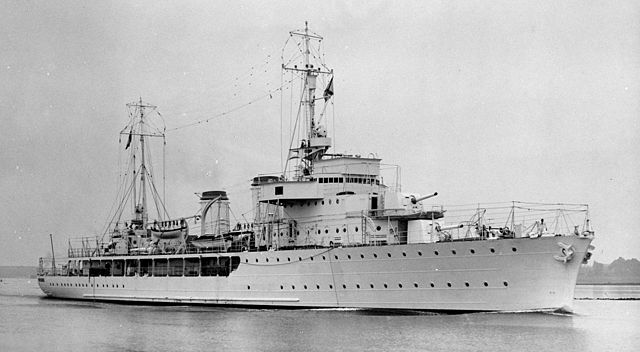
The sloop admiral Charner
Thonburi was still framed with accuracy by Lamotte-Picquet and decided to turn her gun against her, but a salvo from the French cruiser blasted on her aft turret. The coat guard then entered shallow water in the bay, where the cruiser could not follow her but at that point she was already burning fiercely, listing to starboard while her remaining turret was jammed and could no longer fire. At 07:50 Lamotte-Picquet closed enough to launch a trio of 21-in torpedoes at 15,000 metres (16,000 yd), then lost sight of the Thonburi behind an island, from where she did not emerged.
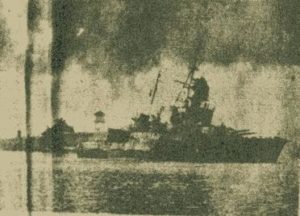
At 08:40, Bérenger decided it was mission accomplished and ordered to head for home, just as Thai air attacks started, dropping several bombs close to the cruiser, but missed. Meanwhile Lamotte-Picquet’s vigorous AA defense and repelled a second attack. The raid, as noted in the board book, ceased at 09:40, leaving the return to Saigon. Decision was taken indeed, to not press on to Sattaya, but this meant also only a portion of the Thai fleet has been impaired.
Thai navy losses were 54 KiA, 307 wounded, including 41 sailors and dead marines plus 67 wounded, 36 on HTMS Thonburi and HTMS Songkhla, HTMS Chonburi combined during the fight while the covering Thai air force lost 13 men and 21 captured.
Epilogue
For the Thais this was nevertheless a distaster. Thonburi was so heavily damaged, grounded on a sand bar in the mouth of the Chanthaburi river with 20 dead and many wounded, she was written off. Her armour was in effect not able to deal with 6-in shells. The transport HTMS Chang arrived and took Thonburi in tow to let her running aground in Laem Ngop, put of harm, to capsize in the shallow waters.
The TB Chonburi sand HTMS Songkhla sank both, with great losses of life, and survivors were picked up by the TB Rayong and minelayer Nhong Sarhai, fishery protection vessel Thiew Uthok. All three had the good fortun to remain hidden in the northern sector of Ko Chang and never broke cover. The French never capitalized on their success however, fearing consequences while the Japanese government quickly offered mediation.
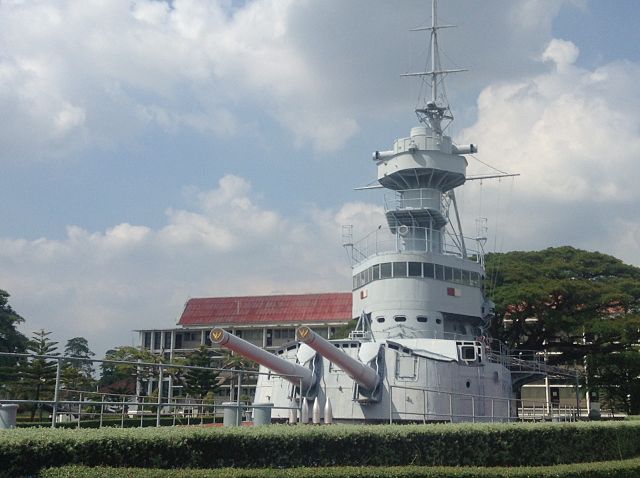
The Thonburi was later raised by the Royal Thai Navy, repaired in Japan but used for training until decommissioned, her guns and bridge being preserved as a memorial at the Royal Thai Naval Academy at Samut Prakan.
The Thai Navy claimed in a port-battle report that heavy damage was inflicted to the Lamotte-Picquet and squadron and the the crew spent all of night repairing damage but its mentioned nowhere in French admiralty documentation, nor ships’ logs.
Thailand is occupied and join the axis
After the naval battle and its forces repulsed, Siam declared its neutrality. At 23:00 on 7 December 1941, the Japanese presented an ultimatum to allow Japanese forces to enter the country, to secure bases for future operations. While having two hours to respond, Thai government made none, and the following day, Japan invaded Thailand. There were several hours of fighting before ultimately Thailand accepted Japanese passage through the country in order to invade Burma and Malaya. Phibun reassured the population, but by all accounts, the Japanese had now control of Indochina, Laos, Cambodge and Thailand. Eventually Thailand, under pressure and de facto ally of Japan, declared war on the allies on 25 January 1942. However its meagre forces did not participate in any large-scale operation, and there was no further loss, not even when the allies took over the region, not always distinguishing between Japanese, Siamese or even French ships.
Read More/Src
Conways all the world’s fighting ships 1921-1947
70th Year of HTMS Thonburi Part I – ThaiArmedForce.com
70th Year of HTMS Thonburi Part II – The Fighting. ThaiArmedForce.com
WatcharaYui. Battle of Koh Chang overview. thaigunship.blogspot.com
La bataille de Koh Chang (janvier 1941) Net-Marine.net
Chaloemtiarana, Thak. Thailand : the politics of despotic paternalism NY: Cornell Southeast Asia Program, 2007.
Pattaragoson, Dilok. เรือจ้างในลำน้ำ (неопр.) // Nawikasat.
Journoud, Pierre (2012). Face à la France, une victoire de Thaïs (8 ed.). fr:Guerres & Histoire.
Liedtke, Marcel. Thailand- The East (English Edition): Bangkok & Pattaya Metropolitan Area
Guiglini, Jean (1990). Translated by Macpherson, K. R. “A Resume of the Battle of Koh-Chang”. Warship International
Romé, Contre-Amiral Paul, Les oubliés du bout du monde: Journal d’un marin d’Indochine de 1939–1941
https://en.wikipedia.org/wiki/HTMS_Sri_Ayudhya
https://en.wikipedia.org/wiki/Thailand_in_World_War_II
https://en.wikipedia.org/wiki/Etna-class_cruiser_(1941)
https://en.wikipedia.org/wiki/Matchanu-class_submarine
https://en.wikipedia.org/wiki/Trad-class_torpedo_boat
https://www.navypedia.org/ships/thailand/th_dd_kantang.htm
https://www.navypedia.org/ships/thailand/th_index.htm
Thai Navy nomenclature
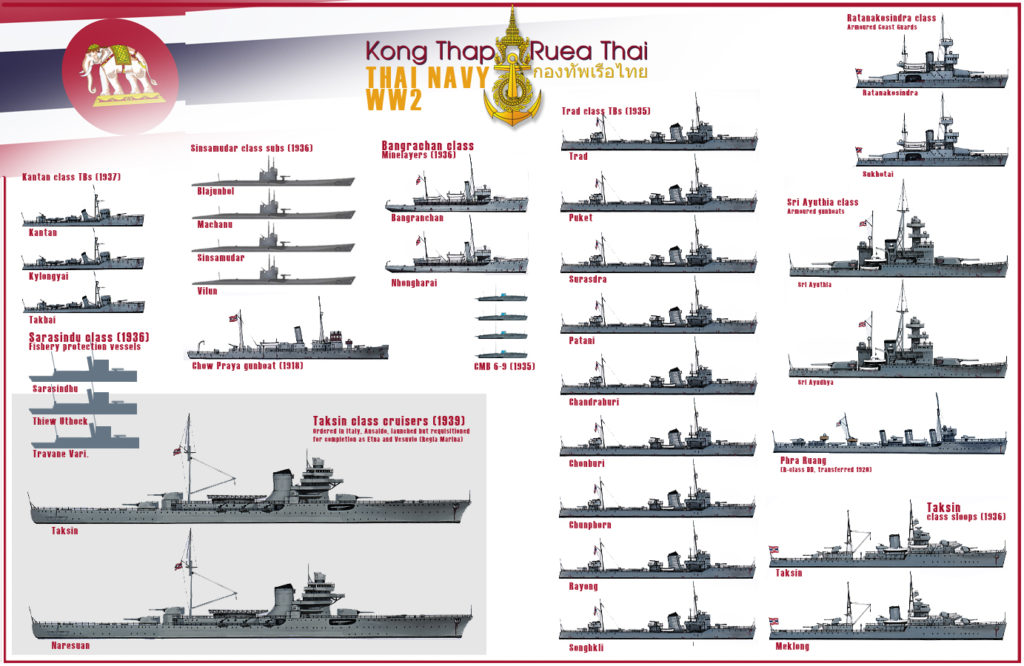
Poster of the Thai Navy in WW2. Not here are unarmed vessels, the dispatch vessel Samet and Royal Yacht Maha Chakri (1918). It shows in particular the combination of heavy guns armored gunboats and torpedo boats, submarines, making for a potent regional green water navy. The Taksin class cruisers are on a grey background as separated from the rest. They were indeed ordered in 1938 but nevel delivered and never completed because of WW2. The profiles showed their reconstructed appearance. A full-blown dedicated post will be written on these.
 Taksin class cruisers
Taksin class cruisers
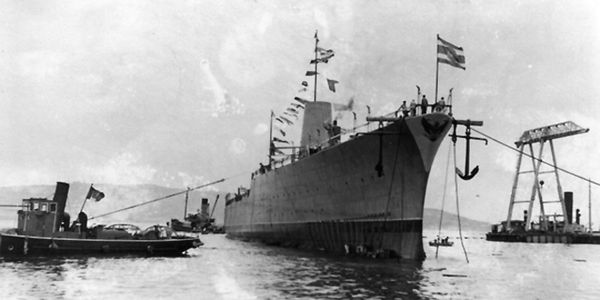
Taskin after lauch, towed for completion.
These 2 Units, HTMS Taksin and the Naresuan, were by far the most ambitious of the Siamese naval plan. They were ordered in 1938 from Italy, started in 1939 in Trieste, but following the outbreak of the conflict, their construction stopped in 1941, and they were finally requisitioned by the Italian government to strengthen the Regia Marina. Renamed Etna and Vesuvio, they were practically in service when the armistice of November 1943 occurred.

HTMS Taksin, if completed and into service under Thai colors in 1941.
Technical specifications were:
Displacement: 5,500 standard tons
Dimensions: 153.8 m long x 14.47 wide x 5.25 draft
Machinery: 2 turbines, propellers, 3 boilers, 4500 hp, 30 knots
Protection: from 30 to 60 mm
Armament: 6 x 152 mm in (3×2), 6 x 76 mm AA, 8 x 12.7 mm AA Breda AA, 2×3 533mm TTs.
 Ratanakosindra class armoured gunboats (1925-29)
Ratanakosindra class armoured gunboats (1925-29)
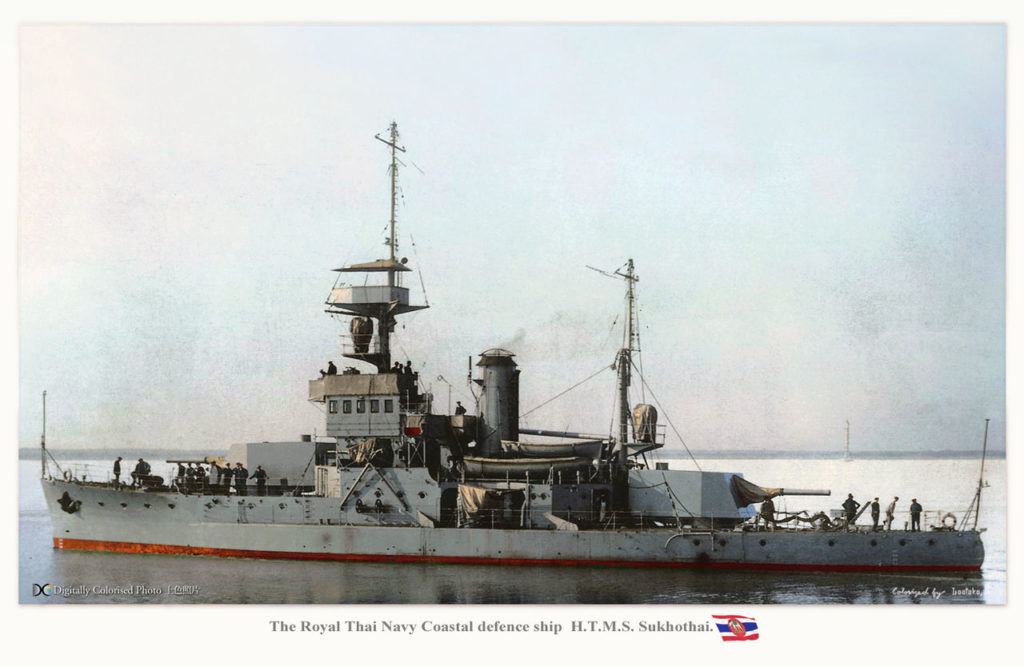
Ratanakosindra & Sukhotai, were British-built.
Although Siam could not afford battleships, two ships quite similar to the coastal units deployed by many European fleets were ordered from Japan (Kawasaki Shipyard). The small Ratanakosindra had served as models, but the new specifications, developed ten years later, recommended heavy cruiser parts (203 mm) in twin turrets.
Large and powerful (2900 tonnes at full load), these ships were significantly faster than the previous coastguards, and their much more marine hull authorized them for outings on the high seas. Their telemetric guidance was derived from Japanese cruisers, similarly than turrets and their cannons.
On paper, Siam aligned the power of a heavy cruiser (eight 8-in guns or 203 mm) by combining both ships. They were therefore deployed logically in the company of three torpedo boats providing advanced cover against Lamotte Picquet. But the latter proved that the figures were only paper and neutralized the two ships (Sri Ayuthia and Dhonburi) during the night of January 16 to 17, 1941 without suffering any impact from them. This naval action left the Siamese with a bitter taste.
HTMS Sri Ayuthia was later bailed out easily (its commander had it docked to prevent it from sinking in the Gulf of Siam), repaired and put back into service, it was sunk by regular artillery against the insurgents who captured it during the revolution of 1951. Since then, these two ships have been demolished, but all the superstructure and the turrets of Sri Ayuthia have been saved and are visible from the museum of war near Bangkok.
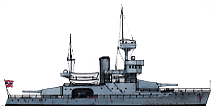
Specifications
Displacement: 2226t / 2900t FL
Dimensions: 76.50 x 14.43 x 4.17 m
Propulsion: 2 shafts MAN diesels, 5200 hp, 15.5 knots.
Armor: Belt 65, turrets and barbettes 102 mm, Bridges 38 mm
Crew: 155.
Armament: 4 x 203, 4 x 76 mm AA, 4 x 40 mm AA.
 Sri Ayuthia class armoured gunboats
Sri Ayuthia class armoured gunboats
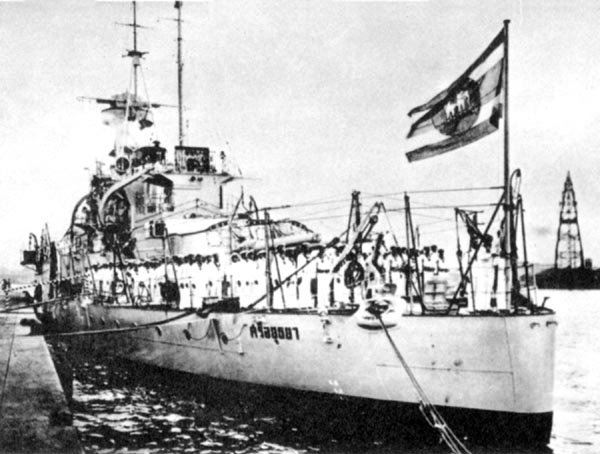
HTMS Sri Ayudhya port stern view
These two units, very wide, high and short, were designed, built and launched specially in 1925-1929 by the Vickers Armstrong shipyards. They were designed as monitors, but fitted with a bow elevation in order to increase seaworthiness on the high seas. Armed with light cruiser guns (6-in), they were armored, notably having a small tower blockhouse under the bridge, and a telemetry station accessible from an armored mast. Although not participating in the action against the French fleet at Kho Chang, they remained in service until the years 65-66 (Ratanakosindra) and 75-76 (Sukhotai).
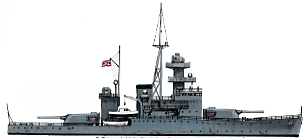
Specifications
Displacement: 886t/1000t FL
Dimensions: 53 x 11.3 x 3.3 m
Propulsion: 2 shafts VTE, 2 boilers, 850 hp. 12 knots.
Crew: 103.
Armament: 2 x 152 mm, 4 x 76 mm AA.
 Destroyer Phra Ruang (1916)
Destroyer Phra Ruang (1916)
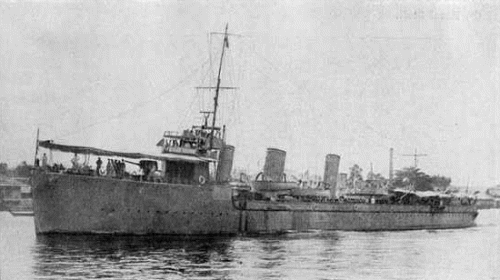
She was a R-class destroyer, launched in November 1916 and in service until 1920. She was sold back to Thornycroft on 21 June, which found rather quickly a buyer, the Royal Thai Navy, in September 1920. Renamed Phra Ruang it was financed on personal donation by King Rama VI and his entourage and some members of the government. It was the first donation for warship procurement in Thailand, and it ws purchased after negotiations led by Prince Admiral Abhakara Kiartivongse. He would command the ship until she reached Thailand.
On 29 January 1943, USS Trout torpedoed a destroyer believed to be Phra Ruang, which were duds. She would serve until the last day of the war and well beyond, becoming the oldest R-class destroyer still in service anywhere in the world. Used as a training ship until 1957, she was stricken in 1959 and BU later.
 Trad/Puket class Torpedo Boats (1935)
Trad/Puket class Torpedo Boats (1935)

The Siamese navy did not have modern destroyers, but aligned 9 modern coastal torpedo boats: The Trad class, built in Italy (Adriatic shipyards, Montfalcone). The Trad and the Puket were launched in 1935, the Surasdra and the Patani in 1936 and the Chandraburi, Chonburi, Chunphorn, Rayong and Songhkli in 1937.
In order to be in tune with existing stocks of ammunition they had British armaments (Armstrong). Significantly smaller than the contemporary Italian torpedo boats, they were, however, quite marine, significantly more than the Kantan frail. At the tests, they spun 32.3 knots, but in practice the 31 knots were forced. of a torpedo boat, with “aviation” type torpedo tubes in separate tubes (two on each side of the bridge, the other two, double, in the axis). This solution taken up with the Italian torpedo boats made it possible to spare the stability at high speed.
These ships knew the flame of fire against the French fleet at Kho Chang in January 1941. The Puket, the Trad and the Chonburi were put out of action by the guns of the cruiser Lamotte-Picquet, while they were trying to torpedo it. The Trad was however bailed out later, its commander having succeeded in making it gain the coast before sinking, repaired and modernized, it was still operational, like the other survivors, in 1976-80.

Specifications
Displacement: 318t / 470t FL
Dimensions: 68 x 6.40 x 2.13 m
Propulsion: 2 shafts Parsons turbines, 2 Yarrow boilers, 900 hp. 31 knots.
Crew: 70
Armament: 3 x 76 mm AA, 2 x 20mm AA, 6 x 457 mm TTs.
 Kantan class Torpedo Boats (1937)
Kantan class Torpedo Boats (1937)

Probably the smallest torpedo boats in the world at their completion, this series of coastal defense ships (Kantan, Kylongyai and Takbai) was ordered to Ishikawajima in 1937. Siam therefore seemed to prefer them to the faster and cheaper stars, however made their role as patrollers. Very low on the water, and fitted with tubes without low-caliber refills, these units could not withstand heavy weather. A fourth unit was built in 1956 in Bangkok, and remained in service until 1980 … The other three had survived the conflict and were removed from the lists in 1973.

Specifications
Displacement: 110t/135t FL
Dimensions: 42 x 4.6 x 1.52 m
Propulsion: 2 shafts turbines, 2 boilers 1000 hp. 19 knots.
Crew: 31
Armament: 1 x 76 mm AA, 2 x 20mm AA, 2 x 457 mm TTs.
 Sinsamudar class submersibles (1936)
Sinsamudar class submersibles (1936)

4 units built in Japan in 1936: Four coastal submersibles named Blajunbol, Machanu, Sinsamudar and Vilun, built by Japan at the Mitsubishi shipyard, on Thai order.
Of military value reduced by their small radius of action, they were however all indicated in the complex littoral of the Siamese coast. Four additional units were planned by the General Staff, but funds were insufficient to place orders. All four wisely stayed alongside during the half of the war, after having patrolled in 1940-41 against the French fleet, and remained in service until 1955.

Author’ profile of HTMS Sinsamudar
Specifications
Displacement: 370t/430t FL
Dimensions: 51 x 4.11 x 3.65 m
Propulsion: 2 shafts diesels, 2 electric engines 1000/540 hp. 14.5/8 knots surface/underwater
Crew: 24
Armament: 1 x 25 mm AA, 5 x 533 mm TTs (4 bow, 1 stern).
 Tachin class sloops (1936)
Tachin class sloops (1936)

Sometimes also classified as gunboats, these two units bearing the name of the two great rivers of Southeast Asia, the Mekong and the Tachin, were built in Japan, on a specification also specifying a role of training ship. They could also lay mines. These multi-purpose vessels were not deployed during the Thai naval offensive against the French Navy in January 1941 and were therefore spared. The first remained operational until 1945, being demolished after suffering irreparable damage, and the Meklong remained in service until 1976.
Their armament looked heavy, as they had four 120 mm/45 3-shiki, two 20 mm/65 Breda AA model 1939, two twin 7.7mm/87 MG and two twin 450 mm TTs plus a Watanabe WS-103 seaplane. In addition to mines, they had a mechanical minesweeping gear.
They had been ordered under the 1935 programme as multipurpose ships. In addition tp patrol and escort, cadets training ships in peacetime and Royal gunboats. They were built in Japan, derived from local designs. Two more were planned but never ordered.
HTMS Tachin was badly damaged after a raid of British B-24 bombers at Sattahip in June 1945, never repaired, BU in 1946. HTMS Maeklong survived and was modernized three times, used as TS until… 1995 and preserved today as a museum ship in Samutprakan.
In 1955 she received a seaplane, a minesweeping gear and two 40/60 Mk 3 AA guns, in 1965 two twin 450 TT banks, and by 1974 she had four 120 mm/45, two 20mm/65, four 76 mm/50 Mk 22 AA, one 40 mm/60 Mk 3 and finally three 20/70 Mk 4 plus navigation and firing control radars.

Specifications
Displacement: 1400t / 2600t FL
Dimensions: 82 x 10.36 x 3.14 m
Propulsion: 2 shafts VTE 2500 hp. 17 knots.
Crew: 155.
Armament: 4 x 120, 2 x 20mm AA, 4 x 457 mm TTs.
 Bangrachan class minelayers (1936)
Bangrachan class minelayers (1936)
The Bangranchan and the Nhongharai were ordered in 1936 from the Adriatic shipyards in Montfalcone and were used until 1980. They could embark up to 142 standard mines. The 76 and 20 mm were of Italian and Japanese origin.
These Purpose-built minelayers were ordered under the 1935 programme, were small but well-built with good seaworthiness and large mine capacity, carried on two rails on the upper deck running all along the lenght.
They survived the war and served for 40 years. Both received two 20/70 Mk 10 in the 1950s and later a radar.

Specifications
Displacement: 368t/408t FL
Dimensions: 50 x 7.7 x 2.20 m
Propulsion: 2 shafts diesels Burmeister & Wein, 540 cv. 13 knots.
Crew: 55
Armament: 2 x 76 mm, 2 x 20mm AA, 142 mines
 Chow Phraya gunboat (1918)
Chow Phraya gunboat (1918)
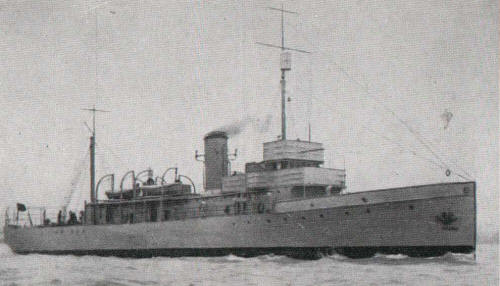
The Chow Phraya was a former Hunt class minesweeper built in Great Britain in 1918 and declared surplus at the end of the war. She was acquired at a preferential rate in 1923 and served until 1971 despite its outdated design.
Built at Eltringham, Willington Quay, launched 1919, she was the former British minesweeper HMS Havant (Hunt class) returned to Thornycroft in 1922, and sold a year after to Siam with her minesweeping equipment removed as she was to serve as a sloop.

Specifications
Displacement: 680t/840t FL
Dimensions: 70 x 8.7 x 2.2 m
Propulsion: 2 VTE 2200 shp 16 knots, 160 tons oil, 1750 nm
Crew: 65
Armament: one 102/40, one 76/40 12pdr 12cwt QF Mk I/II/V, one 40/39 2pdr QF Mk VIII AA
 CMB class torpedo motor crafts (1935)
CMB class torpedo motor crafts (1935)
Three British-built (Thornycroft) motor torpedo boats were ordered in 1935. They displaced 16 tonnes, for 55 feets long (16.7 m), able to a top speed of 40 knots thanks to 950 hp, and carried two torpedoes, two MGs and two deep charges. Fate unknown.
 Sarasindu class fishery protection vessels (1936)
Sarasindu class fishery protection vessels (1936)
These vessels were built in Thailand (Bangkok DYd) on Montfalcone, Italian designs, under the same 1935 programme as fishery protection vessels (No photo). The class comprised HTMS Sarasindhu, Thiew Uthock, and Travane Vari.four Fishery Protection vessels. They displaced 50 tonnes, for 72 feets long (21.9 m), 150 hp and 9 knots, armed with a single 37 mm gun. Related to them was also the dispatch vessel Samet, ex-Pi Sua Nan, displacing 165 tonnes.
 Sriya Monton coast guard vessel (1908)
Sriya Monton coast guard vessel (1908)
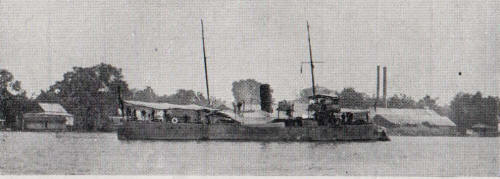
Lauched in 1907 in Thornycroft, Southampton, she was the Gunboat for customs and board guard services, displacing 225 tons, 41.8 oa x 5.5, 2 m in size. She received two shaft VTE steam engines fed by a single Thornycroft boiler, 7500 shp, top speed 14.5 knots. She was armed with two 57/40 Hotchkiss guns. She was discarded in 1935 but stil extant in 1940.
 Thai Launches N°1-6 (1941)
Thai Launches N°1-6 (1941)
A serie of six small domestically-built 16 tonnes launches at Bangkok DYd, named No 1-6, capable of 12.5 knots and armed with a single 20mm/70 Mk 4 gun. They were discarded in the 1950s to 1961.
 Maha Chakri Royal Yacht (1918)
Maha Chakri Royal Yacht (1918)
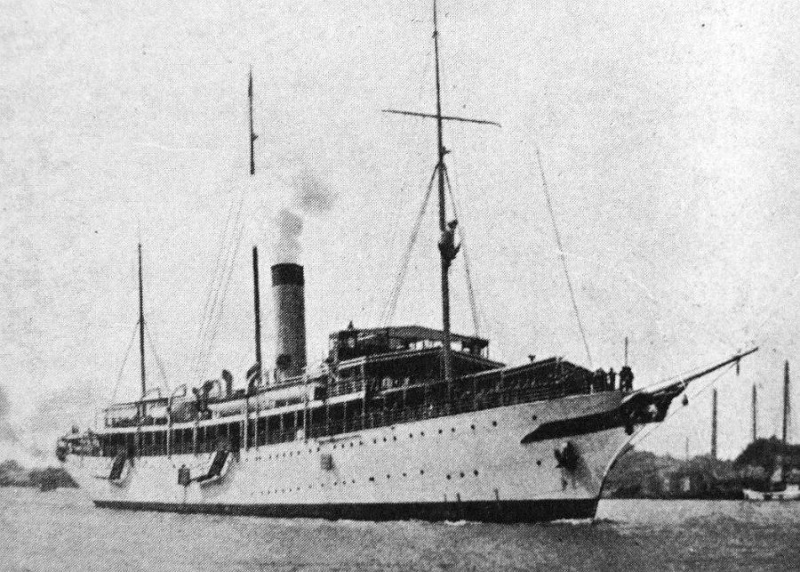
The former Maha Chakri was active WW1 as a cruiser but was equipped and fitted with luxury accomodation at the drydock. She still had her original four 120/40 Armstrong guns in sponsons and ten 57/40 Hotchkiss guns. However as a protected cruiser she had a 51mm protective deck. Her engines and fittings were taken out when she was scrapped, reused in same name ship built by Kawasaki in 1918. The latter was a true yacht, with elegant lines, clipper bow and three schooner masts.

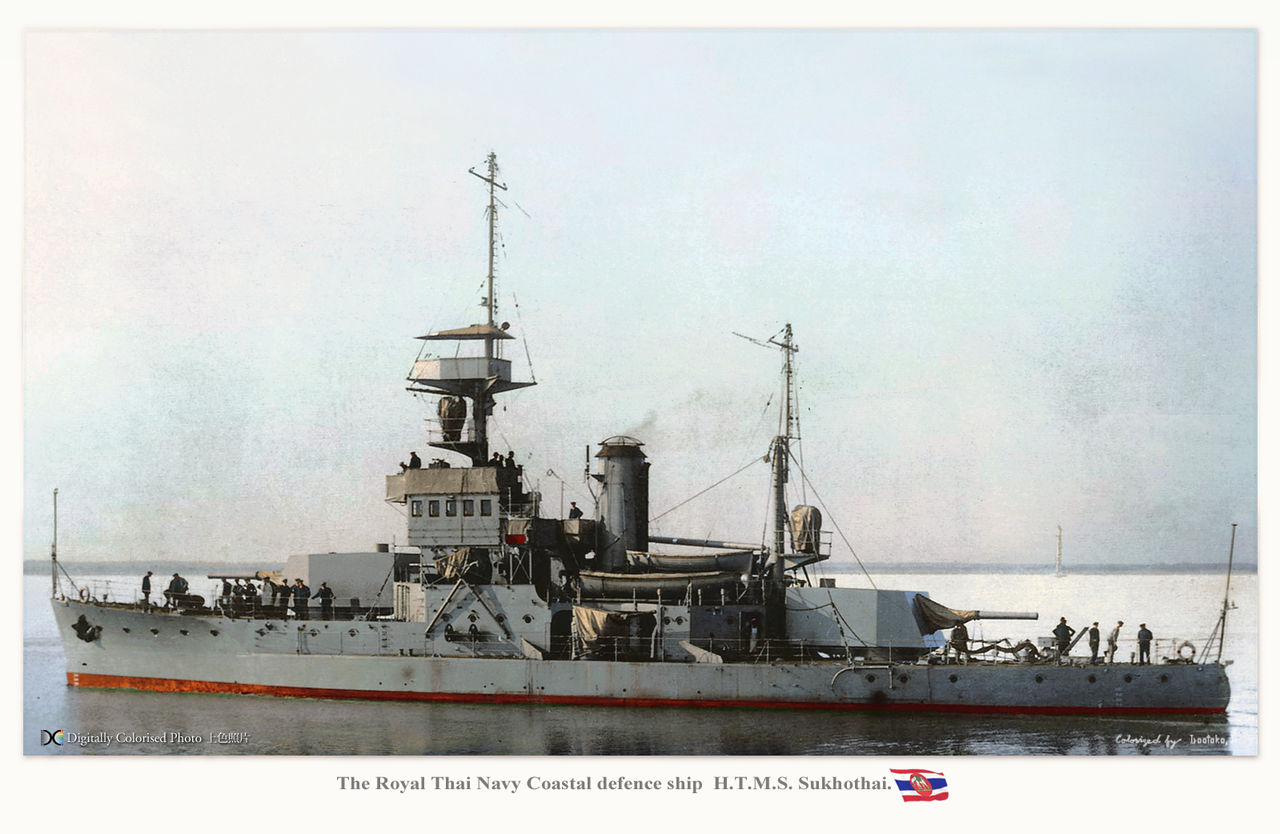
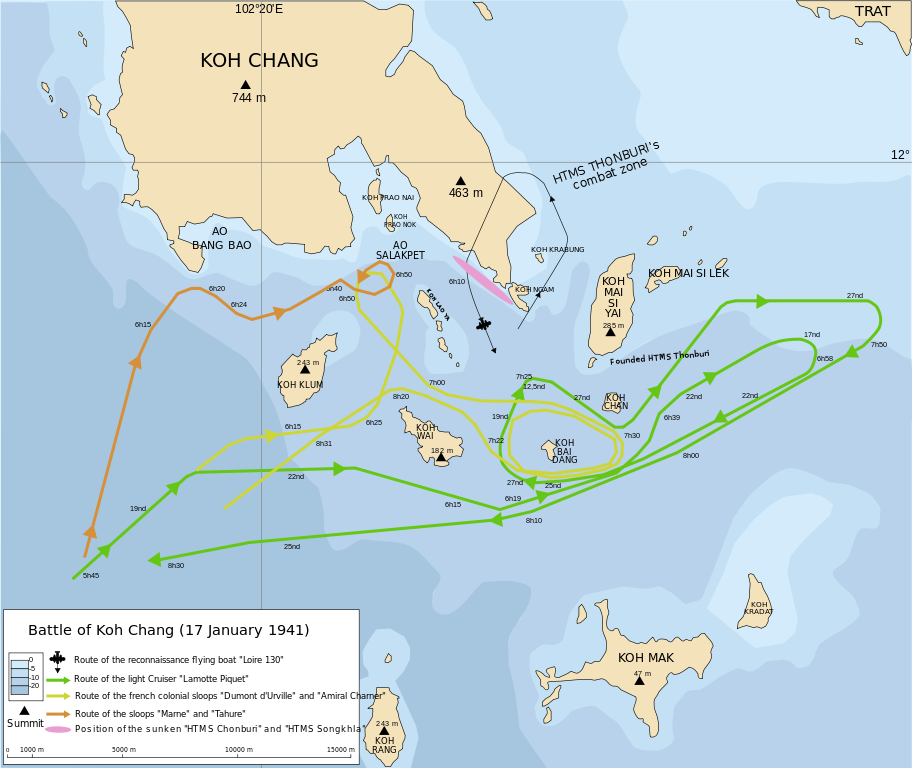
 Latest Facebook Entry -
Latest Facebook Entry -  X(Tweeter) Naval Encyclopedia's deck archive
X(Tweeter) Naval Encyclopedia's deck archive Instagram (@navalencyc)
Instagram (@navalencyc)





 French Navy
French Navy Royal Navy
Royal Navy Russian Navy
Russian Navy Armada Espanola
Armada Espanola Austrian Navy
Austrian Navy K.u.K. Kriegsmarine
K.u.K. Kriegsmarine Dansk Marine
Dansk Marine Nautiko Hellenon
Nautiko Hellenon Koninklije Marine 1870
Koninklije Marine 1870 Marinha do Brasil
Marinha do Brasil Osmanlı Donanması
Osmanlı Donanması Marina Do Peru
Marina Do Peru Marinha do Portugal
Marinha do Portugal Regia Marina 1870
Regia Marina 1870 Nihhon Kaigun 1870
Nihhon Kaigun 1870 Preußische Marine 1870
Preußische Marine 1870 Russkiy Flot 1870
Russkiy Flot 1870 Svenska marinen
Svenska marinen Søværnet
Søværnet Union Navy
Union Navy Confederate Navy
Confederate Navy Armada de Argentina
Armada de Argentina Imperial Chinese Navy
Imperial Chinese Navy Marinha do Portugal
Marinha do Portugal Mexico
Mexico Kaiserliche Marine
Kaiserliche Marine 1898 US Navy
1898 US Navy Sovietskiy Flot
Sovietskiy Flot Royal Canadian Navy
Royal Canadian Navy Royal Australian Navy
Royal Australian Navy RNZN Fleet
RNZN Fleet Chinese Navy 1937
Chinese Navy 1937 Kriegsmarine
Kriegsmarine Chilean Navy
Chilean Navy Danish Navy
Danish Navy Finnish Navy
Finnish Navy Hellenic Navy
Hellenic Navy Polish Navy
Polish Navy Romanian Navy
Romanian Navy Turkish Navy
Turkish Navy Royal Yugoslav Navy
Royal Yugoslav Navy Royal Thai Navy
Royal Thai Navy Minor Navies
Minor Navies Albania
Albania Austria
Austria Belgium
Belgium Columbia
Columbia Costa Rica
Costa Rica Cuba
Cuba Czechoslovakia
Czechoslovakia Dominican Republic
Dominican Republic Haiti
Haiti Hungary
Hungary Honduras
Honduras Estonia
Estonia Iceland
Iceland Eire
Eire Equador
Equador Iran
Iran Iraq
Iraq Latvia
Latvia Liberia
Liberia Lithuania
Lithuania Mandchukuo
Mandchukuo Morocco
Morocco Nicaragua
Nicaragua Persia
Persia San Salvador
San Salvador Sarawak
Sarawak Uruguay
Uruguay Venezuela
Venezuela Zanzibar
Zanzibar Warsaw Pact Navies
Warsaw Pact Navies Bulgaria
Bulgaria Hungary
Hungary

 Bundesmarine
Bundesmarine Dutch Navy
Dutch Navy Hellenic Navy
Hellenic Navy Marina Militare
Marina Militare Yugoslav Navy
Yugoslav Navy Chinese Navy
Chinese Navy Indian Navy
Indian Navy Indonesian Navy
Indonesian Navy JMSDF
JMSDF North Korean Navy
North Korean Navy Pakistani Navy
Pakistani Navy Philippines Navy
Philippines Navy ROKN
ROKN Rep. of Singapore Navy
Rep. of Singapore Navy Taiwanese Navy
Taiwanese Navy IDF Navy
IDF Navy Saudi Navy
Saudi Navy Royal New Zealand Navy
Royal New Zealand Navy Egyptian Navy
Egyptian Navy South African Navy
South African Navy






























 Ukrainian Navy
Ukrainian Navy dbodesign
dbodesign